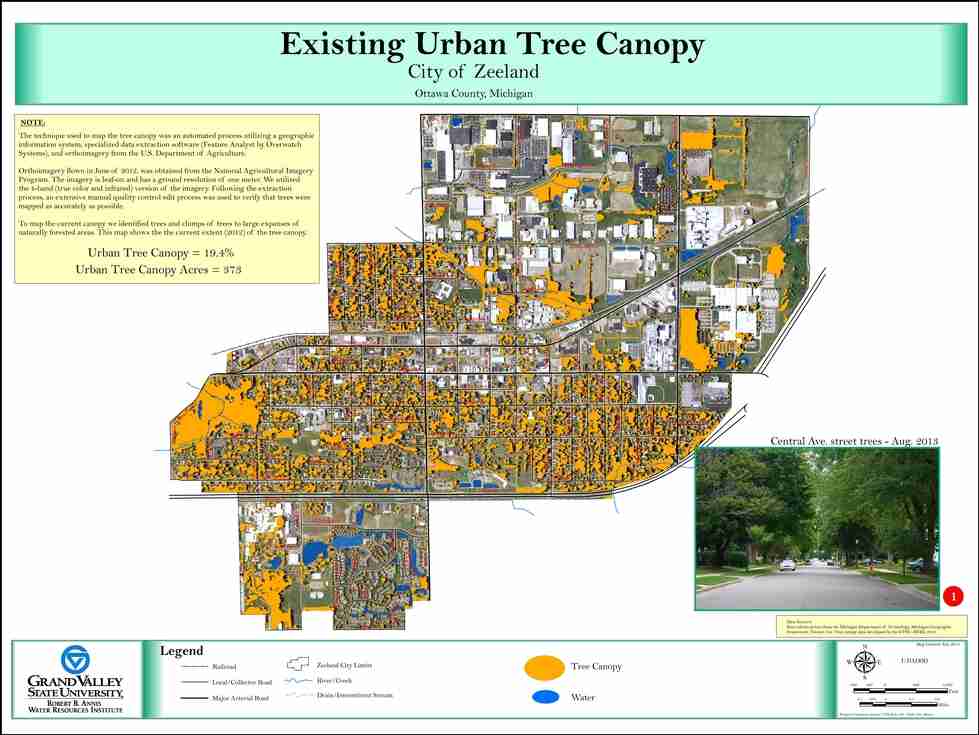Urban Forests
Urban Forests are not only great to look at but offer considerable social and economic benefits to any community. They are good for the air, good for the water, reduce energy consumption, and improve property values.



Good For The Air
Trees freshen the air we breathe. They release oxygen as a byproduct of photosynthesis. Consider this - a healthy 32’ ash tree can produce about 260 lbs. of net oxygen annually. A typical person consumes 386 lbs. of oxygen per year. It takes only two trees to produce enough oxygen for a single person to consume in a year! Trees also reduce atmospheric CO 2, and they do this in two ways. First, they store CO 2 in their leaves and stems as they grow. Secondly, urban trees reduce the demand for heating and cooling, and thereby reduce emission associated with power production. Trees have been shown to actually improve air quality by absorbing gaseous pollutants like ozone, nitrogen oxides, etc. They intercept particulate matter such as dust, ash, pollen, and smoke. The health implications that result from urban forests are obvious, but these benefits also have economic value. People living in tree covered cities are healthier and spend less time going to the doctor or visiting the hospital. Urban tree canopy assessments done by AWRI for the City of Zeeland suggest that the removal of air pollutants has a total value of $92,324! And that benefit is realized every year just because of the trees.
Good For The Water
Trees also reduce stormwater runoff and improve water quality. Leaves and bark surfaces intercept and store rainfall. Root systems increase the rate at which rainfall infiltrates into the soil. Tree canopies reduce soil erosion by diminishing the impact of raindrops on the ground. Transpiration, the process where trees expel moisture through their leaves, reduces soil moisture and thereby increasing the soil's capacity to store more rainfall. A mature deciduous tree can intercept 500 – 760 gallons of water per year. And if that seems like a lot, a mature coniferous tree can intercept more than 4,000 gallons of water per year! The reduction of stormwater runoff can have enormous savings for a community in the minimization of flood damages and considering the cost of storm sewer construction and maintenance.
Reduce Energy Consumption
Trees modify local climate and conserve energy in several ways. Shading provided by trees reduces the amount of heat absorbed and stored in built surfaces. Transpiration converts liquid water to water vapor and cools the air. Wind speed reduction reduces infiltration of outside air into interior spaces, reducing heating and cooling costs.
Improve Property Values
Trees provide a host of esthetic and social values which translate into economic benefits. Trees add color, texture, line, and form to the landscape making it interesting and visually appealing. So called “Curb Appeal” has value. People are willing to pay 3 to 7 percent more for property that has ample trees versus those with few or no trees. Trees also provide the most productive wildlife habitat within an urban environment, another benefit considered by current and future home owners.

